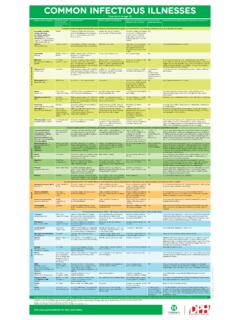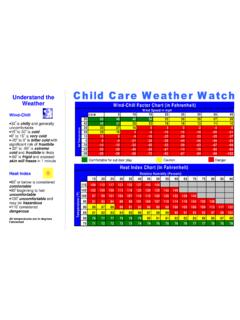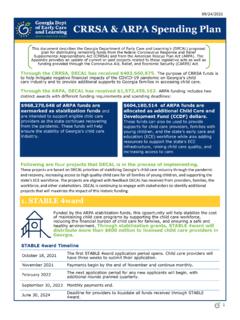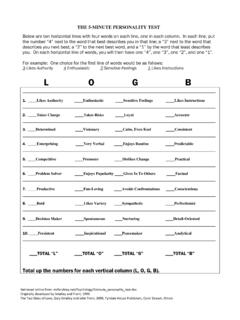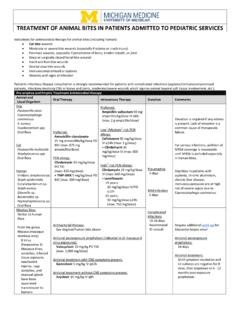Transcription of COVID-19 - Bright from the Start
1 COVID-19 INTERIM guidance AS OF JANUARY 26, 20221 GA COVID-19 Child Care guidance Updated January 26, 2022 Contents 1. COVID-19 Prevention Strategies .. 3 Promoting vaccination .. 3 Consistent and Correct Mask Use .. 4 Physical Distancing and Cohorting .. 6 Screening Testing .. 7 Ventilation .. 7 Handwashing and Respiratory Etiquette .. 8 Staying Home When Sick and Getting Tested .. 9 Contact tracing, isolation, and quarantine .. 10 Cleaning and disinfection .. 10 2. Georgia Requirements and 13 Isolation and Quarantine .. 13 Vaccination Verification .. 15 Students, teachers, and staff that become ill with signs and symptoms of infectious illness, including COVID-19 .
2 16 Cases of COVID-19 in the Child Care Setting .. 17 The child care facility is notified of a confirmed or probable case in a child, teacher, or staff 17 Child, Teacher or Staff with Symptoms (No Testing and Not Linked to Positive Case) .. 19 Returning to Child Care .. 19 Reporting .. 21 3. Additional 22 Holding, Washing, or Feeding Children .. 22 Diapering Children .. 22 Transport Vehicles .. 22 Children with Disabilities or Other Healthcare Needs .. 23 24 Food Service and Meals .. 25 Toothbrushing .. 25 Playgrounds and Physically Active Play .. 26 Water Systems .. 27 4. Appendix (Reporting Forms) .. 28 2 GA COVID-19 Child Care guidance Updated January 26, 2022 The Georgia Department of Early Care and Learning (DECAL) and the Georgia Department of Public Health (DPH) are committed to supporting early childhood learning during the COVID-19 pandemic.
3 DECAL and DPH recognize the vital role that providers, including their teaching staff, play in the support of Georgia s children and families, especially during a public health crisis. Early education and child care programs licensed or exempt by the Georgia Department of Early Care and Learning (DECAL), including Child Care Learning Centers, Family Child Care Learning Homes, Georgia s Pre-K Programs, license exempt providers, and Child and Adult Food Programs and Summer Food Service Program Institutions and Sites, shall maintain full compliance with all DECAL directives and guidance . The following practices align with Centers for Disease Control and Prevention (CDC) and DPH guidelines for open child care programs during the COVID-19 pandemic and should be implemented by all open and reopening child care programs until further notice to assist the program s compliance.
4 How Was This guidance Developed? In order to secure the health, safety, and protection of children and their families across the state of Georgia, the Georgia Department of Public Health (DPH) worked closely with the Department of Early Care and Learning (DECAL) to develop guidance for Georgia s child care facilities. The following considerations are shared to assist child care facilities in creating an environment that will continue to slow the spread of COVID-19 . How Should this guidance be Used? Families should use this guidance to understand what health practices will be in place in child care facilities. All child care facilities will be required to follow certain health practices in this guidance noted as required.
5 Many child care facilities may also choose to implement some or all the recommended practices. Child care facilities should use this guidance to understand what health practices they must meet, and to develop detailed plans for how to implement all required health practices described in this guidance . The guidance document should be used in combination with operational guidance provided by the local public health district and the Governor s Office. DECAL, local public health district, and child care facilities should establish a working relationship and dialogue that address the unique situation and needs of each community and each child care facility. Not all recommendations will be appropriate for all ages, child care facilities, or communities.
6 Please note that this guidance is subject to change and will be updated as additional scientific evidence becomes available. New variants of the virus that causes COVID-19 , including the Omicron ( ) variant that make it more transmissible, are spreading in Georgia. Vaccination is the primary way to protect individuals from infection with COVID-19 ; current data suggest that COVID-19 vaccines authorized for use in the United States offer protection against the circulating variants. DPH will continue to monitor variants and will update guidance accordingly. 3 GA COVID-19 Child Care guidance Updated January 26, 2022 1. COVID-19 Prevention Strategies Early Child Care and Education programs are an important part of the infrastructure of communities.
7 They provide safe and supportive care environments for children that support social and emotional development, provide access to critical services, and improve life outcomes. They also employ people and enable parents, guardians, and caregivers to work. Implementing layered prevention strategies ( , using multiple prevention strategies together) is critical to protect children, teachers, and staff who are not up to date on COVID-19 vaccination. The need for specific prevention strategies will vary based on community transmission levels, vaccination coverage, COVID-19 outbreaks or increasing trends in the facility or surrounding community, and ages of children and the associated social and behavioral factors that may affect risk of transmission and the feasibility of different prevention strategies.
8 Promoting vaccination Vaccination is currently the leading public health prevention strategy to end the COVID-19 pandemic. Achieving high levels of COVID-19 vaccination among eligible teachers, staff, children and household members is one of the most critical strategies to help child care facilities safely continue full operations. Child care facilities can encourage and promote COVID-19 vaccination of all eligible families, teachers, and staff. People who are up to date on COVID-19 vaccines are well protected from severe illness, hospitalization, and death from infection with COVID-19 . Individuals 5 years and older are strongly recommended to receive a primary series of COVID-19 and are considered fully vaccinated 2 weeks after receiving a primary series.
9 O For persons 18 and older, a primary series consists of: A 2-dose series of an mRNA COVID-19 vaccine (Pfizer-BioNTech or Moderna), or A single-dose COVID-19 vaccine (Johnson & Johnson s Janssen) o For children 5 years through 17 years of age, a primary series consists of 2 doses of the Pfizer-BioNTech COVID-19 vaccine. It is strongly recommended that individuals remain up to date with their vaccines, including additional doses for immunocompromised individuals and/or booster doses at regular time points. When promoting COVID-19 vaccination, child care facilities should consider that certain communities and groups have been disproportionately affected by COVID-19 illness and severe outcomes, and some communities might have experiences that affect their trust and confidence in the healthcare system.
10 Messaging can be adjusted to the needs of families and communities. To promote vaccination, child care facilities can: 4 GA COVID-19 Child Care guidance Updated January 26, 2022 Partner with the local health department to serve as COVID-19 vaccination sites and/or host vaccination events. Host information sessions to connect parents and guardians with information about the COVID-19 vaccine. Visit for information on COVID-19 vaccination in Georgia. Use the CDC COVID-19 Vaccine Toolkits to educate the child care community about COVID-19 vaccines, raise awareness about vaccination benefits, and address common questions and concerns. Consistent and Correct Mask Use When teachers, staff, children, and families consistently and correctly wear a mask, they protect others as well as themselves.


